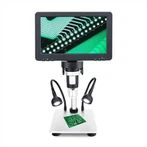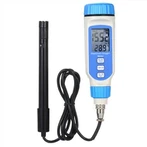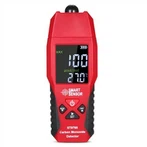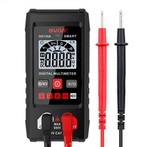Digital ultrasonic rangefinder developed
1. Introduction
Ultrasonic waves propagate at different speeds in gases, liquids, and solids, with good directionality, concentrated energy, minimal attenuation during transmission, and strong reflection ability. Ultrasonic waves can propagate at a certain speed and form reflections when encountering obstacles. By using this characteristic, the actual distance can be calculated by measuring the time it takes for ultrasonic waves to travel back and forth, thus achieving non-contact distance measurement of objects. Ultrasonic ranging is fast, convenient, and not affected by factors such as light. It is widely used in hydrological liquid level measurement, construction site measurement, on-site position monitoring, vehicle reverse obstacle detection, mobile machine detection and positioning, and other fields. The digital ultrasonic rangefinder designed in this article counts the clock pulses input to a specific frequency of the counter during the ultrasonic round-trip time, and displays the corresponding measurement distance.
2. Circuit composition and working principle of ultrasonic rangefinder
The ultrasonic rangefinder consists of an ultrasonic generating circuit, an ultrasonic receiving amplification circuit, a counting and display circuit.
2.1 Ultrasonic generation circuit
Ultrasonic generation circuit. The dual timer EN556 (U2b) forms a monostable trigger. R6 and C6 form a differential circuit, which functions as follows: when button S2 is pressed, the low level becomes a positive and negative spike pulse, which passes through VD1 to obtain a negative spike pulse, triggering a monostable trigger flip. The high-level duration of the monostable flip output is about 1ms, which is tw ≈ 1.1R5C5 ≈ 1ms. EN556 (U2n) forms a multi harmonic oscillator with an oscillation frequency of f1=1/T1 ≈ 1/{0.7 [(R1+R2)+2 (R3+R4)] C3 ≈ 40kHz. The oscillation of the oscillator is controlled by the output level of the monostable trigger. When the monostable trigger outputs a high level, the multi harmonic oscillator oscillates, Pin 5 of EN556 outputs approximately 40 rectangular pulses with a frequency of 40kHz and a duty cycle of approximately 50%. Considering the instability of the starting stage of a multi harmonic oscillator, a larger number of output pulses are designed. If the number of output pulses is too small, the emission intensity is low and the measurement distance is short. The humidity sensor probe, stainless steel electric heating tube PT100 sensor, cast aluminum heater, heating coil fluid solenoid valve, but the number of pulses is too high and the emission duration is long. When the distance from the measured object is close, the pulse train has not been fully emitted, which causes the echo generated by the first emitted pulse to reach the receiving end, affecting the ranging result and increasing the blind spot of the ranging. The U1a~U1e of 74HC04 (U1) form an ultrasonic pulse driving circuit, which can increase the pulse voltage amplitude of the driving ultrasonic sensor, effectively perform electrical/acoustic conversion, enhance the ability to emit ultrasonic waves, and increase the measurement distance. The 40kHz pulse train is inverted through U1a, and then inverted through parallel inverters U1b and U1e; The other way is through the reverse phase of the parallel inverters U1c and U1d in the south.






